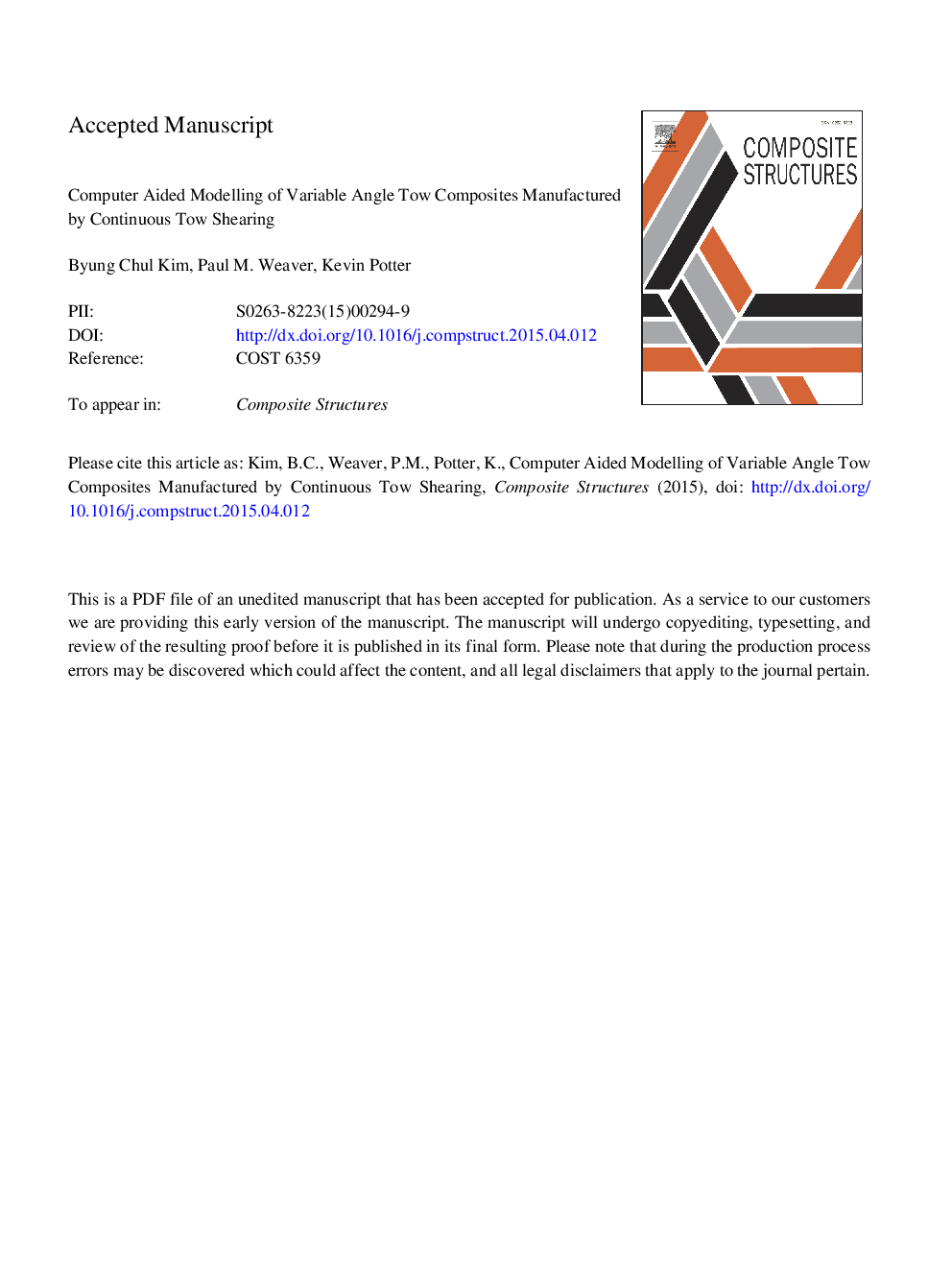| Article ID | Journal | Published Year | Pages | File Type |
|---|---|---|---|---|
| 6706738 | Composite Structures | 2015 | 36 Pages |
Abstract
A novel fibre placement method 'continuous tow shearing (CTS)' has recently been developed in order to minimise process-induced defects in a tow steering process for manufacturing variable angle tow (VAT) composites. As CTS utilises shear deformation of tow materials, it distinguishes itself from conventional automated fibre placement (AFP) processes that use in-plane bending deformation. In doing so, it produces distinct distributions of fibre angle and thickness in a tow steered panel even if the same reference tow trajectories are applied. In this work, a computer-aided modelling tool has been developed, which can create accurate ABAQUS finite element models reflecting the nonlinear fibre trajectories and thickness variations of VAT composites manufactured using the CTS by defining fibre paths with geometric features in a CAD software.
Related Topics
Physical Sciences and Engineering
Engineering
Civil and Structural Engineering
Authors
Byung Chul Kim, Paul M. Weaver, Kevin Potter,
